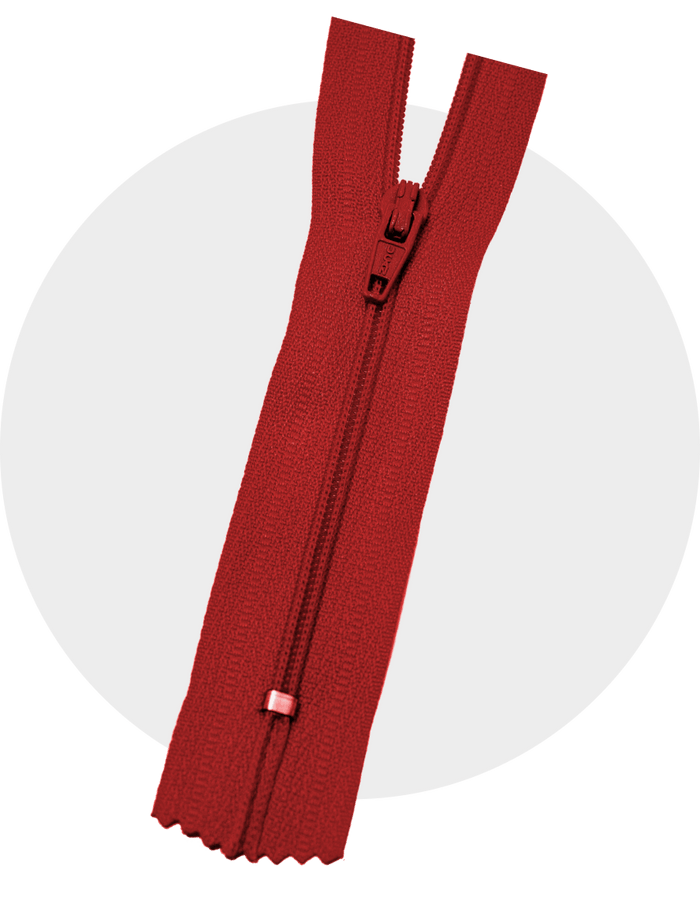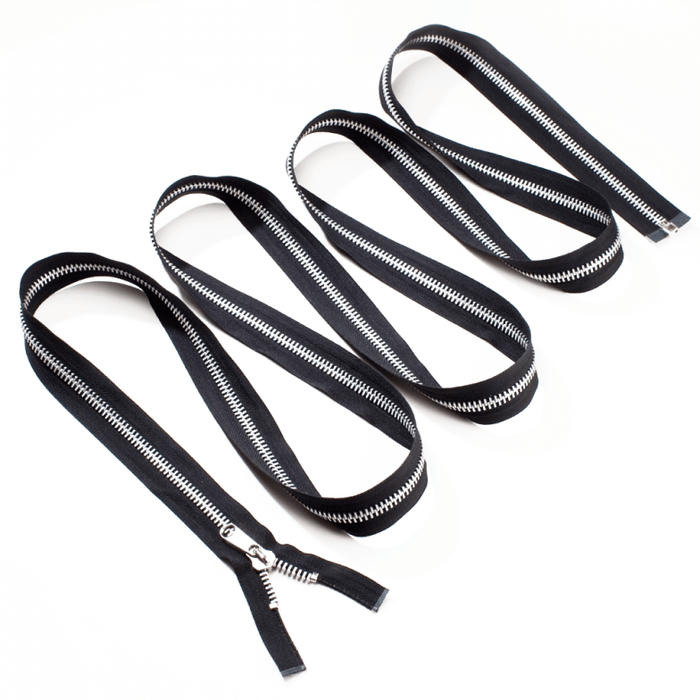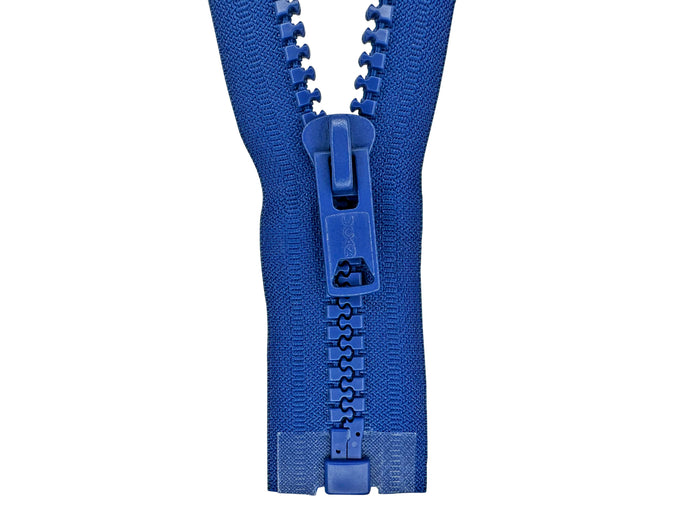To provide a better shopping experience, our website uses cookies. Continuing use of the site implies consent. Learn More
FREE Ground Shipping on orders over $100
HOW TO SHORTEN A ZIPPER*
Looking for instructions for shortening a zipper? Read on for step-by-step directions for the three most common types of zippers.
NYLON COIL ZIPPER
- Determine the final length you want the zipper to be. At the top end of the zipper, mark this measurement using chalk, or mark the point with a safety pin.
- Select two new stops for the endpoint. The gauge of the stops should be the same or less than the gauge of the zipper teeth. For example, for a #5 nylon coil zipper, you can use #3 stops
- Using needle-nose pliers, take the first bottom stop (bottom stops are used as top stops on nylon coil zippers) and pierce the zipper tape with the stop’s prongs and fold the prongs down so they are nestled between the teeth. You don’t want any points sticking out where they can scratch the person wearing the garment. Use the pliers to flatten the prongs, creating a new stopping point.
- Leave 1-2” of lead tape above the new stops, and cut off any excess zipper tape.

METAL TOOTH ZIPPER
- Determine the final length you want the zipper to be. At the top end of the zipper, place a mark at this measurement using chalk, or mark the point with a safety pin.
- Select two new stops for the endpoint. The gauge of the stops should be the same gauge of the zipper teeth. For example, for a #5 brass tooth zipper, you should use #5 brass top stops. In a pinch, the stops could also be slightly larger. The metal finish of the stops should also ideally match the finish of the zipper teeth. e.g. gold stops with brass tooth zipper, silver stops with nickel tooth zipper.
- Using a zipper shortening tool, pull out the first zipper tooth. This is the tooth that is aligned with the end-point marking.
- Going up the same side of the zipper, pull the next ~1.5” to 2” of zipper teeth out above the initial tooth that you pulled. About 2” of zipper tape should be cleared.
- Do the same thing on the other side of the zipper. Due to the two sides of the zipper teeth being offset from one another, one side of teeth will be slightly higher than the other.
- With pliers, clamp on the new top stops. Adjust them so that they are even with each other.
- With pinking shears or a sharp pair of fabric scissors, cut off the excess zipper tape, about 1.5” – 2” above the new top stops. Viola! You have a shorter zipper!

MOLDED PLASTIC ZIPPER
The method is similar to shortening metal-tooth zipper. However, you will need to break off the plastic teeth instead of pulling them off. You might have to chip away at the tooth and peel any stubborn pieces off the zipper tape.
As far as which top stops to use for molded plastic zippers, use stops of a comparable gauge and with the look that you prefer. Unless the zipper is black, it is unlikely that you will have stops that match exactly. A neutral metal stop like silver often works best.

*Don't want to do this yourself?
Shortening zippers is a useful tool in your sewing toolkit. If, however, you just want to get the job done without the fuss, you can leave it to the pros and use Zipper Shipper's shortening service!

As Seen In:






Let customers speak for us
from 3554 reviewsJust what I needed and matched the large separating zipper

So glad I found you!!! I ordered several possibilities for my project and in there found the perfect one.I was replacing a zipper in a sweater and the reverse separating zipper was just perfect. Best choice for a hand knit sweater. Thanks, Thanks, Thanks and will use you for my go to source from now on!

Number 7 slider was what I needed. Works fine now. saved a $100 jacket

I am delighted to find this company, as the choice of zippers in fabric stores is often so limited. This is a hefty zipper which will replace a broken one on my husband's heavy duty coat. It shipped very quickly! I'll shop here again!

Exactly what was on the picture and great quality zippers

Perfect quality. I wish the shipping cost was less expensive.

Better quality metal jean zipper than I could buy locally. I will order from this store again

Tools needed: small screwdriver to remove stopper.
Needlenose pliers.
Cutters to remove some threads which were also acting as stoppers.
With that install was flawless and product seems great.

Great zipper, fast shipping, I would definately order from them again

Just finishing putting the last one in

I'm pleased with the quality of the zippers plus the vast selection offered. Also since I do alteration/repair work, I'm grateful that I received them within a week.
Thankyou 👍!

Fast shipping, have put it on the coat. Appears to work great, haven't needed the coat yet.

Thanks, I am putting them in duffel bags for my granddaughters. So far lm very appreciative.

so far great 3 zippers fixed easy,thanks more people need to know its not the zipper its the slider iv been fixing them for 30 years thanks for a great product sincerely dave

